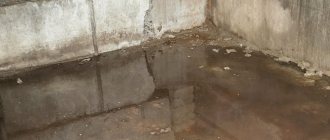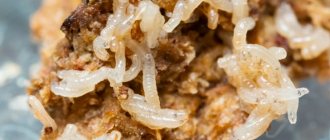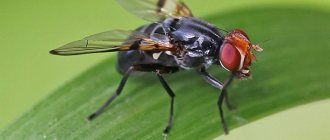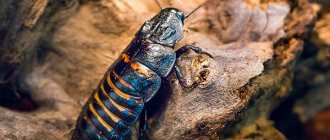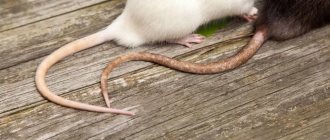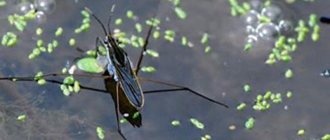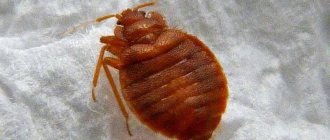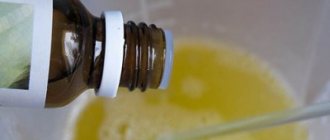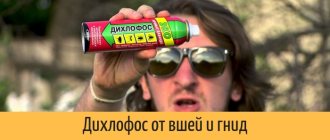Pediculosis is a disease that can develop in every person, regardless of his age, social status and hygiene regime. This is a contagious disease. In order to catch lice, you just need to stand or walk next to a person who is their carrier. No one is immune from this, especially for children, since they are often in close contact with others in children's groups, which means they can pick up lice faster than adults.
But one insect does not cause head lice. To make such a diagnosis, a more significant lice infestation and development of the parasite population must be present. After how many days can it be said that a person has lice? Let's take a closer look below.
How long does it take for a louse to hatch?
These parasites are species-specific - they can feed on human blood and only human blood. Lice and nits have no other victims. Parasites bite and drink blood already from the nymph stage, and only an adult insect can reproduce. The first mating occurs only after the last molt and the first bite after that. To leave offspring, lice must constantly receive food. They drink blood every 3 – 4 hours. If they are left without food, they cannot reproduce. That's why it's important to start pest control right away so as not to give lice a chance to further increase the population.
Stages of their development:
- Nits are lice eggs. They ripen on average within 5 – 8 days. The period of egg development depends on external conditions, primarily on temperature. The temperature of the human body is considered the most favorable, so head lice lay eggs as close to the scalp as possible. In this case, lice hatch from nits within 5 days. When the temperature decreases or increases, the incubation period of nits increases. They stop their development, but do not die. And as external conditions improve, their development continues. In particularly severe cases, the larva can hatch after 16 days. If the nit somehow ends up outside the human body, then it can fall into a state of suspended animation. At this time, all vital functions in the larva are suspended.
- The first order nymph is the first stage of lice development. The larva reaches a size of 1.5 mm, which is larger than the size of a nit. She opens the egg and leaves it, then growth occurs for five days, after which the first moult occurs. The insect's shell does not keep up with its growth, so the parasite sheds it, increasing in size.
- The second-order nymph is the stage of the louse's life cycle between the first and second moults. It takes 5 – 8 days. During this time, the parasite increases significantly in size. At first the louse is 1.75 mm in size, and by the second molt it reaches 2 mm.
- Nymph of the third order - at this stage, the insect’s legs lengthen, the body becomes more elongated and exceeds 2.4 mm in length. After the third molt, the nymph turns into an imago, that is, an adult. For such a transformation she needs from 5 to 8 days.
The difference between an adult and a nymph is sexual maturity. An adult louse is able to reproduce on the second day after becoming an adult.
So, to answer the question of how long it takes for lice to appear in large numbers after contact with an infected person, you need to calculate the total development time. After the insect lays eggs, the new adult will begin to parasitize and produce subsequent generations within three weeks. Under ideal conditions, it takes 10 days from hatching from an egg to becoming an adult insect.
Above we talked about head lice. The life cycle of pubic lice is the same. Body lice develop a little more slowly. But in general, all types of lice go through the same stages of development. The difference is that linen lice lay eggs in clothes, underwear, towels, etc. There may not be such a favorable air temperature or humidity for the insect to develop in the shortest possible time. In addition, starting from the first nymph stage, the parasite can bite and suck blood. He needs food, so he goes hunting before reaching maturity. If it does not have a constantly available source of power, then its rate of development slows down.
Incubation period of lice: features
Now you know how many days it takes for lice to appear - it takes up to 4 weeks from the transition from nit to adult in ideal conditions. But it is worth considering that if the air temperature exceeds +40 °C or falls below -22 °C, the development of the larvae stops. And if autumn or winter reigns around, and a person is often in the cold, the process is lengthened. Therefore, it is possible to accurately answer how long it takes for lice to hatch from nits only taking into account external factors. By the way, the love of washing hair does not in any way affect the rate of development of larvae and reproduction of adults. Both of them hold onto their hair very firmly and are highly resistant to hypoxia, that is, they can easily not breathe for several minutes while under water.
After how many days do lice become more numerous?
If at least one sexually mature individual appears on the head, it begins on the same day not only to bite, but also to lay eggs. One female lays an average of 4 eggs per day. That is, after 16–20 days there will be about 80 nits and lice on the head, including adults, ready for mating and further reproduction. Their number will increase exponentially. Among them there may be insects with increased fertility, laying up to ten eggs a day, so it is necessary to urgently begin the fight (for more details, see the article “How to get rid of lice forever.”
How to find out when lice appeared and where they got infected from? You need to carefully examine your head. If there are only nits on it, and no adults are visible, then no more than 5 days have passed. If insects about 3 mm in size are visible, it means that 2–3 weeks have already passed since the infection.
Frequently asked questions (FAQs)
How did my child get lice?
Contact with an already infected person is the most common way a child will get head lice. Personal contact is common during play at school, at home, and in other settings (sporting events, playground, bachelorette parties, camps).
They can be spread by sharing clothes or items.
Dogs, cats and other pets do not carry lice.
Do diseases spread?
Head lice should not be considered a health hazard. They don't spread disease. Their presence is annoying because it causes itching and loss of sleep. Sometimes itching leads to excessive scratching, which increases the chance of a secondary skin infection.
Can you get lice by sharing sports helmets or headphones?
Head lice are most often spread by direct contact with the hair of an infested person. Spread through objects and personal belongings is very rare. The legs of the parasite are specially adapted to stay on hair.
They have difficulty adhering to smooth or slippery surfaces such as plastic, metal, polished synthetic leather, and other similar materials.
Can lice appear due to nervous conditions?
No. Lice cannot come from nerves. They are transmitted only from infected people. If your head itches but there are no insects, you may have another disease.
Can wigs or hair strands spread lice?
Parasites die if they are separated from their host. Adult lice can only survive one day without human blood. Nymphs live only a few hours without feeding. Nits die within a week without a host and cannot be hatched at temperatures lower than the temperature of the scalp.
For these reasons, the risk of transmission from a wig or other material is very low, especially if the wig has not been worn in the previous 48 hours by a person who is actively infested with head lice.
Watch the video of doctor's advice about lice
Can you get lice while swimming?
Evidence shows that lice can live underwater for several hours but are unlikely to be spread by pool water. They adhere tightly to human hair and do not come loose when submerged under water. Chlorine levels in pool water will not kill lice.
Head lice can be acquired by sharing towels or other objects that have come into contact with an infected person's hair, although this is rare. Children should be taught not to share towels or hairbrushes at the pool or in the locker room.
Swimming or washing your hair for 1-2 days after treatment with lice medications may make some treatments less effective. If you have questions, seek advice from your doctor.
Does head lice go away on its own?
If a person comes into contact with a lice carrier - he walks nearby or, for example, puts on a hat - he can pick up one parasite. This may be a sexually mature female, but she still needs a male to reproduce. If it is not there, then the disease may not develop. The insect will simply drink blood and die after some time. On average, these insects live about 40 days (more details in the article “How long do lice live without humans”). But there are few cases of infection by single individuals that do not leave offspring. More often you have to deal with the rapidly growing population of insects in your hair. Pediculosis itself does not go away even after some time.
Be vigilant or How to prevent infection?
Of course, there are no 100% methods that will protect a child from bringing a “gift” home in his hair. However, it is possible to reduce this danger.
Prevention begins with the work of medical workers in schools and kindergartens. Because they must regularly check their pupils for nits and lice.
However, the greater responsibility still lies with you.
A few simple tips:
* Make it a rule to check your child for nits and lice once every 7-10 days.
* Periodically iron your child's hair with a hair straightener , since lice and nits die at high temperatures.
* Explain to your child several rules of behavior at school or kindergarten:
- You cannot share a hat, scarf, comb, or hair jewelry with other children.
— Before hanging outerwear in the common locker room, you need to turn it over to the wrong side and turn the outer one inside. This will reduce the likelihood of infection, because the louse does not know how to move on a smooth surface.
* If a girl has long hair, then put it in a ponytail or tie it in braids - the likelihood of infection will decrease.
* Wash your child's hair with Algopix shampoo, it contains pine tar. Of course, it does not fight lice, but it has a specific smell that they do not “favor”. You cannot use this shampoo all the time, so use it only if someone has lice at school or kindergarten.
When can I go to school or kindergarten?
In fact, if you have treated your child with an effective remedy, then he is no longer contagious - provided that you repeat the procedure after 7-10 days. Therefore, he can return to the children's team the very next day.
How to destroy nits and lice during the incubation period
First of all, carefully examine the head, paying attention to the roots of the hair. That's where the nits are. They are very small - only 1 mm long. But there can be a lot of them, and in large quantities they look like dandruff. It is worth considering that with the naked eye it is impossible to distinguish nits with larvae developing in them from empty ones. This is visible only at high magnification (more details in the article “How to detect lice and nits”).
If less than five days have passed since contact with a lice carrier or with his personal belongings, it is necessary to get rid of nits. They are attached to the hair using a very sticky substance. To peel them off, you need to use special tools. Among the traditional methods, acidic substances help well - a vinegar solution, for example. You also need a comb with very fine teeth to thoroughly comb out nits and lice (for more details, see the article “How to get rid of lice”).
In any case - when the lice are still developing or have already hatched - they need to be dealt with. For this, we recommend a line of professional pediculicides produced by the Moscow company Laboratory Medilis. These drugs are: Medilis - Permifen, Medilis-Malathion, Medilis-Super, Medilis-I, and Medilis-BIO lotion is intended for the treatment not only of adults, but also of the youngest patients from 5 years of age.
Treatment of pediculosis
If you notice the first signs of infection with dangerous parasites, you must immediately contact a dermatologist, who will recommend effective lice remedies and tell you how to properly treat an infected person. The development of pediculosis is associated with the risk of developing dangerous infectious diseases. After lice appear, people's scalp begins to peel and dry out, and the lymph nodes become inflamed. Constant itching can cause damage to the scalp, causing ulcers to form, hair to stick together and begin to smell unpleasant.
There are a large number of effective medications that inhibit the vital activity of insects or contribute to their destruction. It should be noted that not all products are capable of destroying nits. Therefore, in order to get rid of parasites, it is necessary to carry out the treatment several times, and also carefully comb the head with a special fine comb, which is included with the medications or purchased separately.
You can get rid of lice and nits at all stages of their development. It is necessary to begin treatment in a timely manner using highly effective shampoos, sprays, ointments, lotions and other products, which are available in a wide range in pharmacies. In addition, folk remedies for lice can be used.
What determines the length of the incubation period for pediculosis?
Summarizing, we can sum up how long it may take for a person infected with lice to fully feel the presence of parasites on his body and sound the alarm. Its duration is affected by the type of lice, their initial number that got to the victim, as well as the circumstances that provoked the infection. It is the last point that has not yet been disclosed, although the protective measures that can be taken to avoid such a nuisance as encountering lice directly depend on it.
Most often, such situations lead to the discovery of blood-sucking insects.
- Long-term isolated accumulation of people - work collectives, organized recreation (boarding houses, tourist centers, camps, sanatoriums, hotels, collective hikes), places of deprivation of liberty, dormitories, boarding schools, barracks, camps for refugees or victims of disasters.
- Organization of studies and leisure (school, kindergartens, nurseries, clubs, sports sections, fitness, gym, swimming pool).
- Traveling on a train, especially with an overnight stay, or on a plane or bus over a long distance.
- Visiting hairdressing salons, public steam rooms and saunas.
- Renting temporary housing, be it a hotel or a rented apartment.
It is no less dangerous to try on or borrow other people's things - linen, towels, clothes, hats and headwear.
Treatment of premises for the destruction of lice in Sim
To completely remove lice, it is not enough to wash your hair with shampoo; it must also be treated. The most important thing is that the SES service GigienaDez in the city will help you cope with this task of professionals with knowledge in the relevant field. In fact, SES service personnel use the latest equipment and high-quality insecticides to carry out high-quality disinfection in the house, thereby ensuring a guaranteed long-term effect of complete removal of lice at home. Typically, professionals spray pesticides throughout the apartment, which allows them to penetrate into deeper areas of the apartment, furniture and baseboards, as lice are quickly removed. Remember that no one is immune from lice, and you don't need to panic when they suddenly appear on you. You need to take action immediately or seek professional help.
Types of lice
The following types of lice are distinguished:
- Head. Lives and feeds only in the scalp.
- Clothes. It lives in the seams and folds of clothing and comes out to the skin to feed. It is believed that the body louse is a derivative of the head louse and is approaching a separate species. This type is also a carrier of infectious diseases (typhoid).
- Pubic. Lives on the pubis and is transmitted through sexual intercourse. Can move up the body up to the beard. The incubation period of pubic lice is 24 days, of which 6 days are allocated for the development of nits and 18 for the growth of the larvae.
The average lifespan of an adult head louse ranges from 30 to 42 days . In special cases, an individual can live 46 days.
The body louse can be called the most prolific; its female lays up to 300 eggs in her life, the head louse - 140, the pubic louse - 50.
The short incubation period of lice and nits causes their rapid reproduction in a favorable environment. If insect removal is not taken seriously, they can cause serious damage to human health. Well, it’s also very unpleasant.
How can you detect lice?
At first, it is almost impossible to detect the presence of lice. There are cases when the louse was very different in color from the shade of the hair, and it was easy to detect. But even in this case, a complete treatment of the head is required, since the insect may have already laid eggs.
In nature, everything is arranged so that each individual can camouflage itself from its enemies as much as possible. In this case, we are talking about the fact that a neutral light brownish-grayish color ideally matches all hair, and it is quite difficult to detect a translucent insect of an unknown shade.
Lice can be detected by the following signs:
- On the hair close to the roots (but no more than three centimeters) nits appear - eggs in special cocoons that resemble small droplets or white bags. When there are a lot of them, they are clearly visible.
- Itching from the bites appears , sometimes quite severe.
- On the scalp you can notice small spots of a characteristic blue or gray-blue color. When the insect punctures the skin and walls of a vessel, it injects a blood-thinning component along with saliva, which is why small bruises form.
- You can find black dots in your hair - lice excrement. Outwardly, they resemble similar grains of fleas in the fur of domestic cats and dogs.
- And, in the end, you can detect the insects themselves.
Interesting . The appearance of lice is completely and absolutely independent of how often you wash your hair. Infection occurs only from another person. Alternatively, you can “pick up” lice in a pond with stagnant water.
In modern conditions, there are much fewer cases of head lice, but it is still possible to become infected with them. This is especially true for children - in kindergartens, pioneer camps, and camp sites. But adults cannot be insured either - on buses during large crowds of people, insects may well move onto another person.

